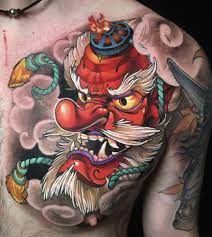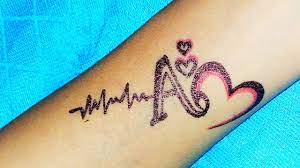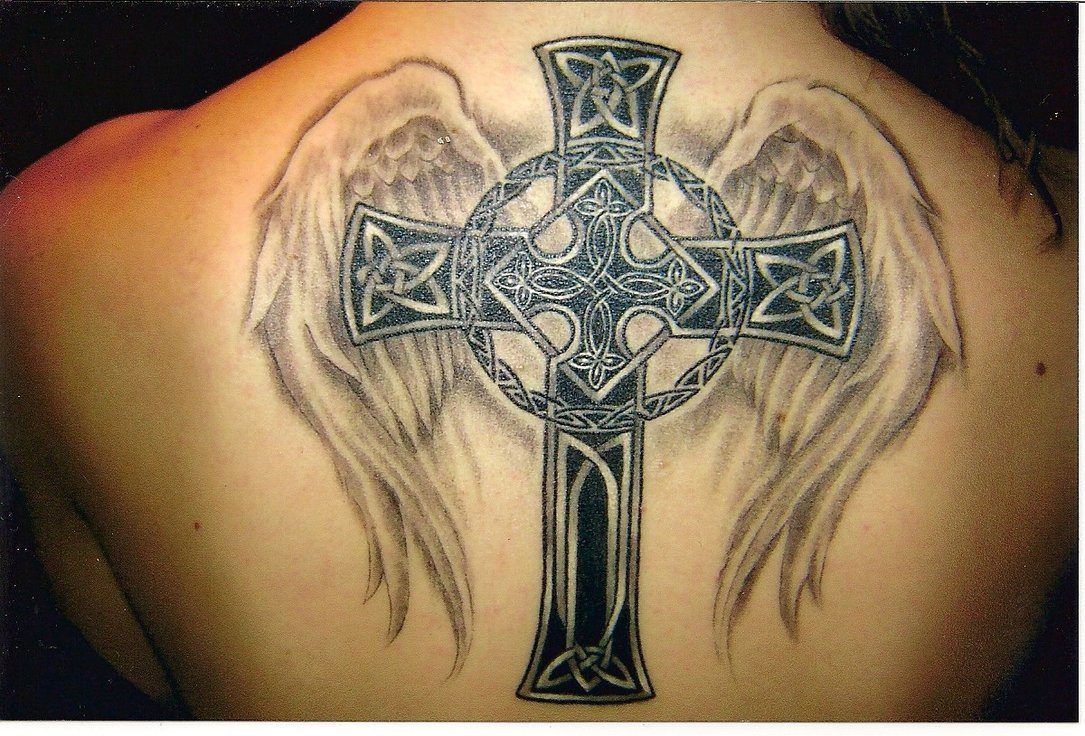
Japanese tattoo masters find inspiration in spiritual legends and philosophical parables for their art, featuring iconic symbols like dragons symbolizing wisdom and self-assurance, carp telling courage, snakes (hebi) warding off misfortune or illness, and peonies signifying wealth and prosperity.
Hannya Demons
Hannya’s demons represent two sides of femininity – sadness and anger. Their color can also indicate social standing: white for nobles, red for provincial serfs, and black for the darkest demons.
Koi Fish
Nishikigoi fish (also known as “koi”) has long been an iconic symbol of Japan and is beloved worldwide. These beautiful and vibrant carp are believed to symbolize wealth, prosperity, love, successful careers, good luck, and longevity.
Koi fish, commonly called “koi,” are sacred creatures in Japan and are often placed at shrines as offerings. A shrine dedicated to Koi exists: Kurihashi Yasaka Shrine in Kuki City, Saitama Prefecture.
Koi fish are best known for their classic variety kohaku, featuring vibrant red pigment that conforms closely to scale edges, providing an eye-catching contrast with their white backgrounds. But other colors and varieties of koi exist too – for instance, a snake (tri-colored) variety features black markings called sumi that should be evenly distributed over its body; alternatively, there’s the kodomo (yi) variety with similar hi patterns but without blue or black hues surrounding this pattern kohaku style hi pattern instead!
Dragons
Dragons are among the most beloved mythical creatures seen in traditional Japanese tattoo designs, often combined with other animals like tigers or koi fish to emphasize their strength and power and bring good fortune to their wearers.
Oni
An oni is another legendary figure found in Japan that often appears as the final boss in folktales and typically features red or blue skin, horns, fangs, and creature hands – often known to cause fear and terror among enemies.
Flowers
Flowers are popular motifs in Japanese tattoos. Cherry blossoms, in particular, symbolize the fleeting beauty of life, while peonies symbolize wealth and prosperity. Chrysanthemums serve as a poignant reminder of family members who have passed on and serve as an eternal tribute.
Kirin
Kirin is a magical creature resembling unicorns that is said to bring luck, so having this tattoo might be the way to achieve good fortune and fortune in your life.
Oni Masks
One of Japan’s most beloved and mesmerizing tattoo creatures is the demon-inspired Oni Mask. A must-have for anyone interested in Japanese culture, Oni Masks are must-have fashion accessories or home decorations; additionally, they can serve as protective talismans against evil spirits.
Oni are often depicted as troll-like creatures with messy hair, sharp claws, vibrantly red or blue skin, and loincloths adorned with iron clubs called kanabo. Oni are among the Buddhist deities who punish sinners in the afterlife.
The hannya mask symbolizes feminine anguish and anger, especially the betrayed wife’s fury at having been wronged. Historically, it has been used as part of traditional Japanese theater performances such as noh and kyogen plays or Shinto Kagura dance rituals, where female characters were used. Today, it can symbolize inner strength after someone close to her has betrayed her.
Kasa-Obake
Japanese folklore abounds with many spirits and ghosts that possess various powers; some can be highly harmful while others pose minimal threats – the kasa-obake is one such harmless spirit you might come across while exploring Japan.
These spirit creatures are supernatural beings known as yokai that inhabit objects as creatures or animals, inhabiting them either friendly or hostilely depending on what thing they inhabit.
Known in Japan as kasa-obake spirits, umbrella spirits are one of the more prevalent types of tsukumogami (spirits that manifest from antique objects). While their appearance might suggest otherwise, these playful yet mischievous umbrella spirits are active and destructive. They often move small belongings around or rearrange furniture unwittingly before sneaking up behind an unsuspecting victim and licking their neck, leaving them temporarily paralyzed for brief moments.

